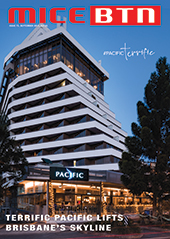TFC forecasts lots of silver lining, little cloud
- MICE News
- Thursday, 24 June 2010
The TFC forecasts that, following the four per cent decrease last year, the value of tourism to the Australian economy will regain some of this loss, rising three per cent to A$92 billion in 2010.
Both international (up two per cent) and domestic (up three per cent) segments are forecast to show growth in value.
International travel to Australia is forecast to increase 5.5 per cent (or 308,000 to 5.9 million visits), following the 3.5 per cent growth so far this year (January-April).
Australia's robust economic performance (and the increasing propensity for Australians to travel overseas) also is expected to encourage further growth in international aviation capacity servicing Australia.
Arrivals from all major inbound markets are forecast to increase in 2010, with most growth (in terms of trips) coming from the US (up nine per cent or 42,000), China (up nine per cent or 34,000) and New Zealand
(up three per cent or 30,000).
The markets showing the strongest growth this year in percentage terms are the Middle East (up 20 per cent) and Indonesia (up 19 per cent).
The chair of the TFC, Bernard Salt said: "Tourism will clearly benefit from the stronger economic backdrop this year compared with the terrible conditions last year. The recent fall in the dollar will also make international leisure travel to Australia cheaper, while the global economic recovery should boost business travel."
The TFC also noted that the recent concerns over Australia's international education segment have not yet translated into fewer education visitors.
While we have seen a fall from some markets, notably the United States and India, education visitors to Australia have risen seven per cent so far this year, fuelled by strong growth from China, our largest education market. An improved outlook is also forecast for the domestic tourism sector, with domestic visitor nights in Australia forecast to increase 1.5 per cent this year, after sharp falls in recent years.
Salt said: "A weaker Australian dollar combined with growth in jobs and discretionary spending will benefit the sector this year and next." Growth in outbound travel continues to be strong, with a record number of Australians leaving the country in 2009 (up eight per cent) and so far in 2010 (January-April 2010, up 18 per cent), featuring solid growth to nearby destinations New Zealand, Indonesia and Malaysia.
The combination of heavily discounted airfares and a strong Australian Dollar - which fuelled growth late last year - will become less favourable over the course of 2010.
Growth in Australian outbound travel is forecast to slow to a still very strong 13 per cent this year.
Salt did however caution that "the modest optimism in these forecasts is based on the somewhat patchy global economic recovery gathering momentum over the course of this year. However, a return to global recessionary
conditions, possibly stemming from the sovereign debt concerns in Europe, would reduce discretionary spending on consumables like tourism. Managing these risks highlights the need for Australian governments and the tourism industry to work together to improve the competitive footing and resilience of this key sector."










